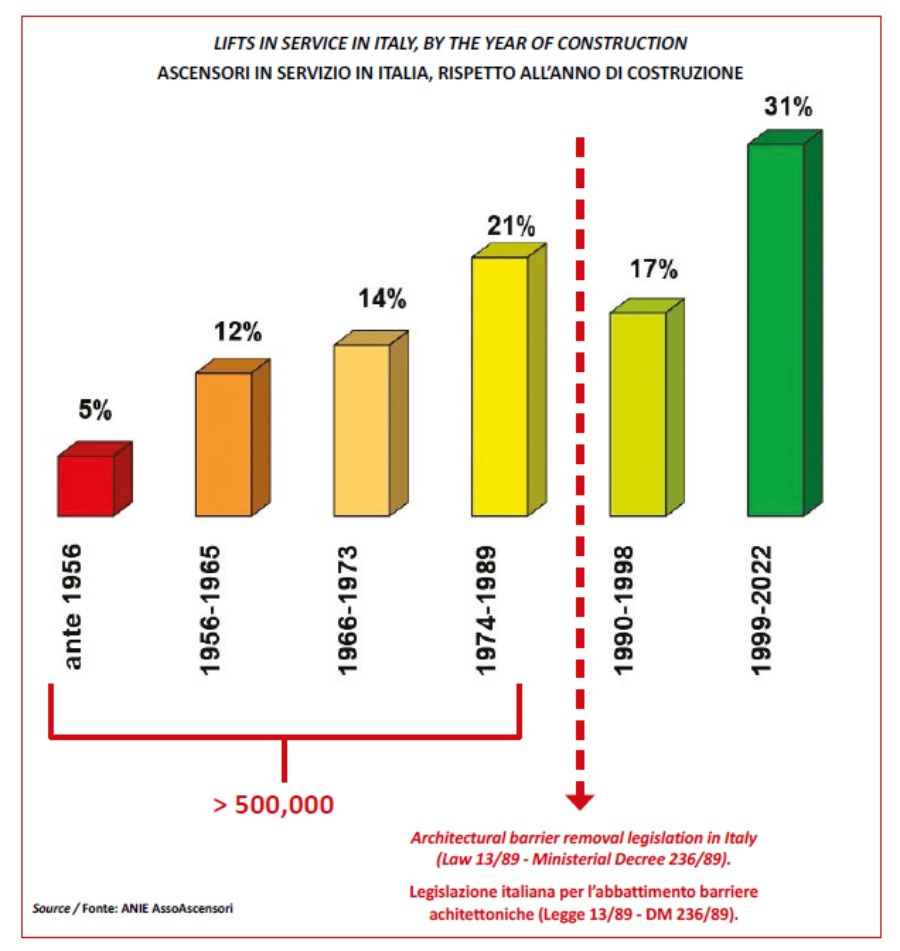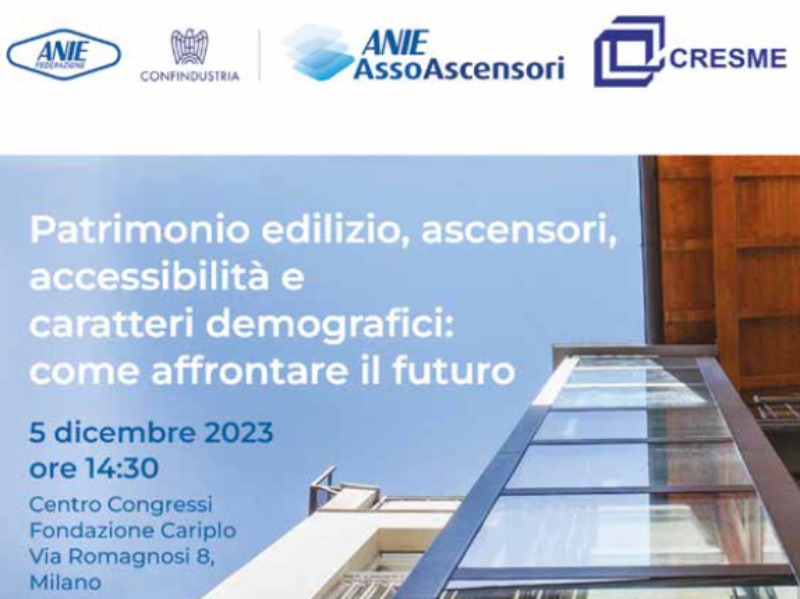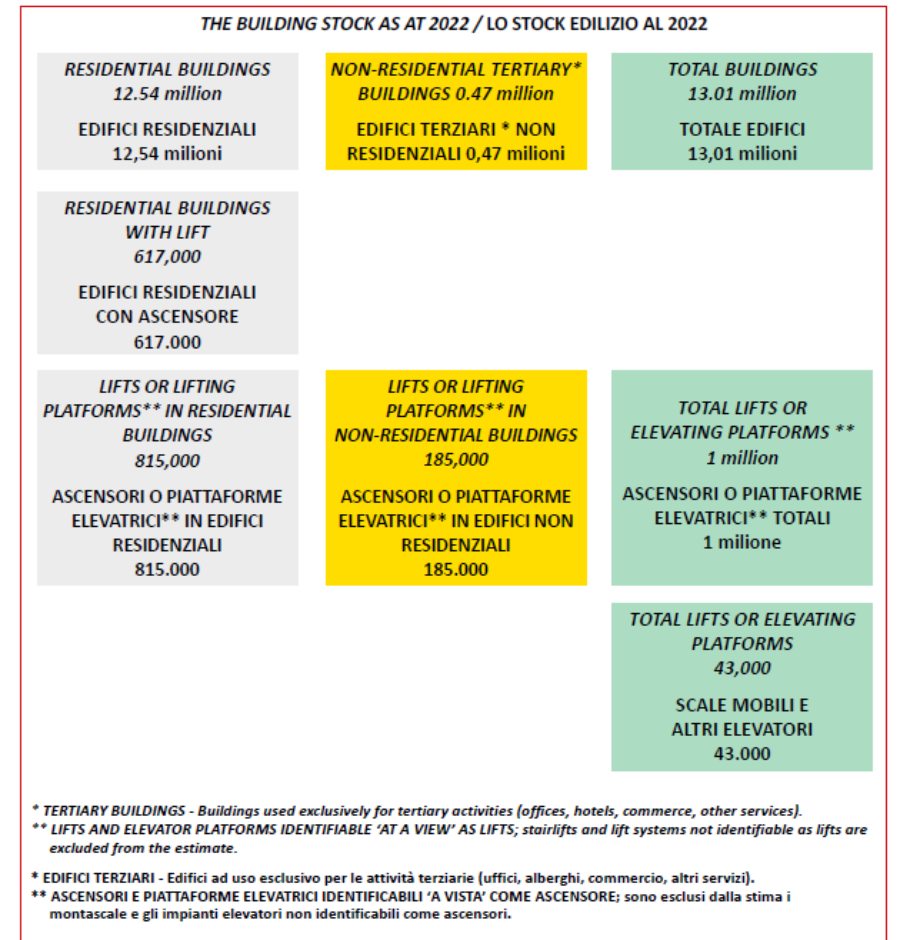Cresme: lifts & lift platforms
market in Italy
Since antiquity, man has sought solutions to transport people and things to the upper floors of buildings, inventing machines of various types, such as the large
cages, with large pulleys operated by slaves, that served to transport beasts and fighters from the underground floors to the stage of the Colosseum, or the chairs connected to a system of ropes and pulleys that allowed Renaissance nobles to be transported to the upper floors.
The oldest machines, as well as modern lifting and transport systems, have in common the objective of facilitating movement and ensuring access to all floors of buildings. This need is increasingly felt in todayʼs society, which must ensure equal opportunities for everyone to participate in social and economic life, including the elderly and those with temporary or permanent disabilities.
From this point of view, Italy cannot be counted among the most virtuous countries, despite the fact that the concept of “accessibility” is referred to in the Constitutional Charter, which states that “it shall be the duty of the Republic to remove those obstacles of an economic and social nature which constrain the freedom and equality of citizens, thereby impeding the full development of the human person.” In fact, Italy’s housing stock is old, functionally inappropriate and inaccessible.
More than 50% of existing buildings in Italy are over 50 years old and more than 80% were built before 1990, according to regulations that do not guarantee current levels of safety, efficiency and usability.
It cannot, therefore, come as a surprise that more than half of the Italian lift fleet predates the entry into force of the regulations on the removal of architectural barriers (1989).

However, in the very near future there will be an increase in the number of people with mobility problems or with permanent or temporary disabilities who will demand an increase in the level of accessibility in order to be able to maintain their autonomy and quality of life.
At the European level, it is estimated that in 2040 people over 75 will represent 15% of the population and that 34.5% of the European population will be over 60 in 2050 (in 2000 it was 20.3%). Among European countries, Italy has the highest population ageing index.
A plan for retrofitting existing installations combined with a programme of new lift installations in buildings without them could significantly improve the level of comfort and usability for users, enabling, for example, elderly or disabled people to remain in their homes.
This approach is even more relevant in the case of public buildings, which should become much more accessible to avoid social exclusion of the elderly or those with mobility problems, starting with public transport and stations.

These considerations are supported by the results of the ʻReport on the market for lifts and lifting platformsʼ produced by CRESME on the initiative of ANIE AssoAscensori and presented on 5th December 2023 at the Centro Congressi Fondazione Cariplo in Milan (Italy) during the conference ʻBuilding heritage, lifts, accessibility and demographic characteristics: how to face the futureʼ.

Da sinistra a destra : Franco Villani (Federazione ANIE), Guglielmo Pelliccioli (Il quotidiano immobiliare), Angelo Fumagalli (ANIE AssoAscensori), Lorenzo Bellicini (Cresme).
Some data have, for example, shown that in Italy, out of more than 12 million residential buildings:
- more than 770,000 buildings with 4 or more floors have no lift;
- only 12.6 per cent of residential buildings with 3 storeys above ground level have a lift installed;
- where they do exist, more than 500,000 lifts were installed before 1989, when the first legislation on the removal of architectural barriers came into force;
- at least 3.7 million people, or 7.2% of the population over 15 years of age, have serious mobility difficulties.

In the next issues of Elevatori Magazine you will be able to read the in-depth publication of what emerged from the discussion of the participants at the event on 5th December 2023 on the data presented and, more generally, on the topic of accessibility of the building stock in our country.








